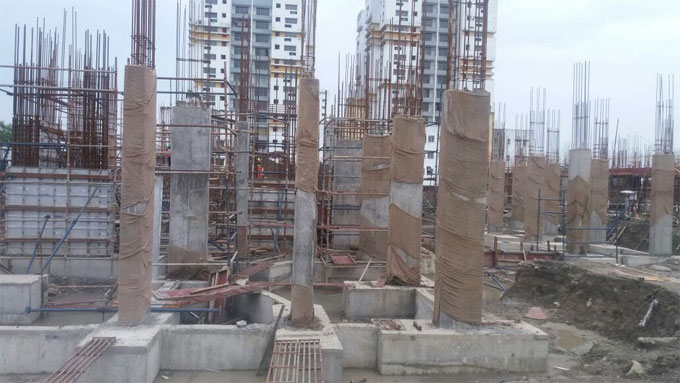
How to create a column layout perfectly
In order to design a column layout, the following thumb rules should be taken into consideration. Normally, the columns are designed on the basis of the total forces operating on the structure, but aside from that, it is necessary for each Civil engineer and Architect to become aware with few thumb rules to avoid any costly mistakes.
The following three thumb rules are very important:
1. Size of the Columns
2. Distance among Columns
3. Alignment of columns
Reduce Size of RCC columns: The total load of the columns plays an important role to determine the size of the columns. The axial loads and lateral loads are found on columns. Large beam extents cause bending moment in the beams as well as in columns which are drawn by the stresses in the beams. It is recommended to always utilize use advanced structural design software like ETabs or Staad pro.
Suppose, this general thumb rule will be employed on a structure of G+1 floors high with standard 6? walls.
The least size of an RCC column should not be under 9?x 9? (225mm x 225mm) having 4 bars of 12 MM Fe500 Steel. Alternatively, 9? x 12? (225 mm x 300mm) with 6 bars of 12 MM Fe500 steel can also be applied. It is also advisable to utilize M20 grade concrete for the structure (ratio 1 part Cement : 1.5 parts Sand : 3 parts Aggregate with 0.5 parts water by volume). It will be best to utilize 8 MM stirrups at a spacing of 150 MM center to center all through the length of column.
This setup of 9? x 12? RCC columns is suitable for G+1 Floors. There are also other alternatives.
Span (distance) among two columns: To arrange column efficiently, a distance of up to 5 meters is most effective. It is suggested to apply beams having size 9? X 12? (225 MM x 300MM) with a slab thickness of 5? (125 MM) cast in M20 concrete for spans up to 5m. Some other alternatives like secondary and tertiary spans, point loads and wall loads can also be taken into consideration. The thumb rule will be mostly effective for simple structure.
In a beam of up to 5 meters length, secondary spans of up to 4 meters, wall loads of up to 8 kN per running meter, the following dimensions of steel are recommended.
? Top Steel ? 2 bars of 12 MM
? Crank bars ? 2 bars of 12 MM, cranked at an angle of 45? at a distance of L/4 at both ends of a simply supported beam
? Bottom Steel ? 3 bars of 12 MM.
The above dimensions can be modified on the basis of several factors :-
Alignment of Columns: There should be proper plan for the placement of the columns. A planner plays an important role. A grid column placement is very suitable to minimize the point loads and avoidable complications during construction. It minimizes the cost of construction and the construction time significantly. The beams having continuation with other simply supported beams can lessen bending moments, and as a result less steel and concrete depth is required to maintain safety.
Columns should be attached with each other for transmitting loads smoothly. An experienced planner will take all these things in mind at the time of creating plan for the structure.


